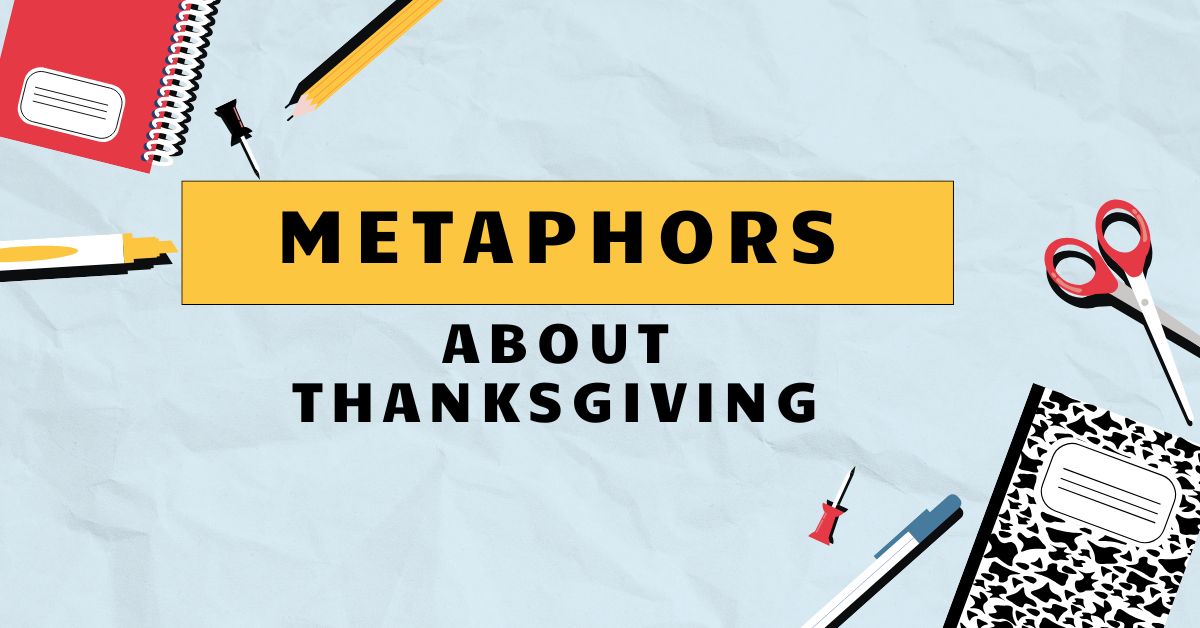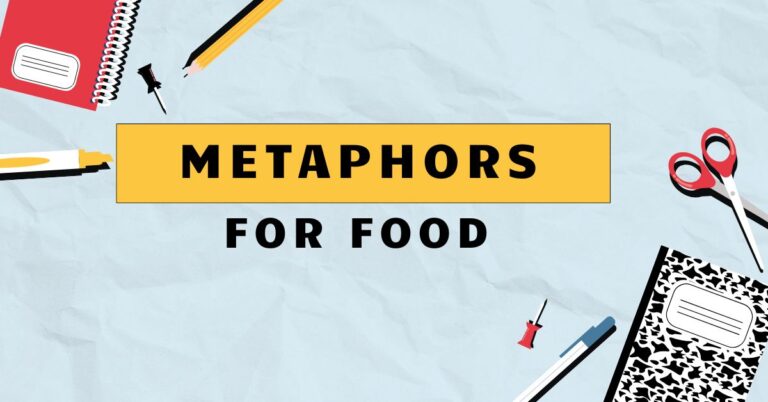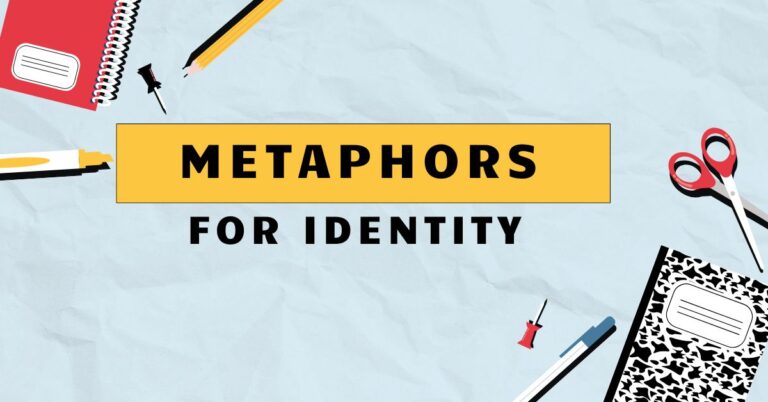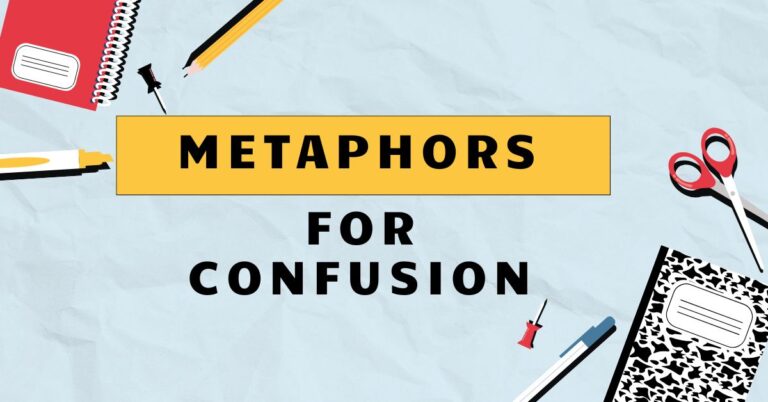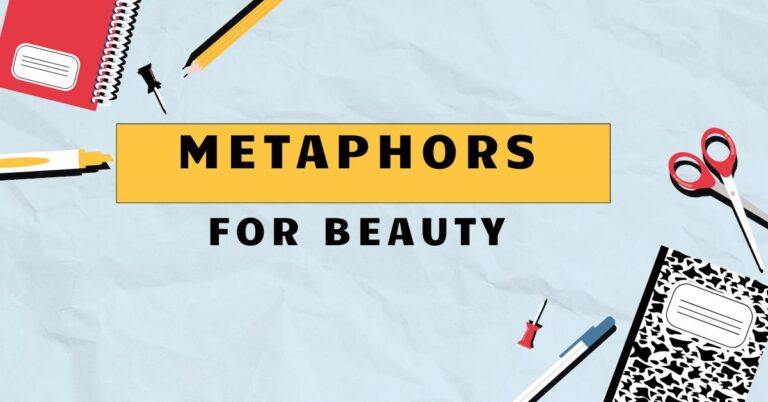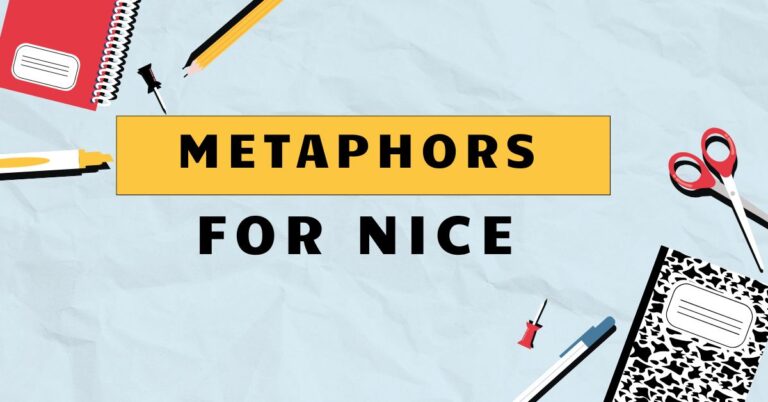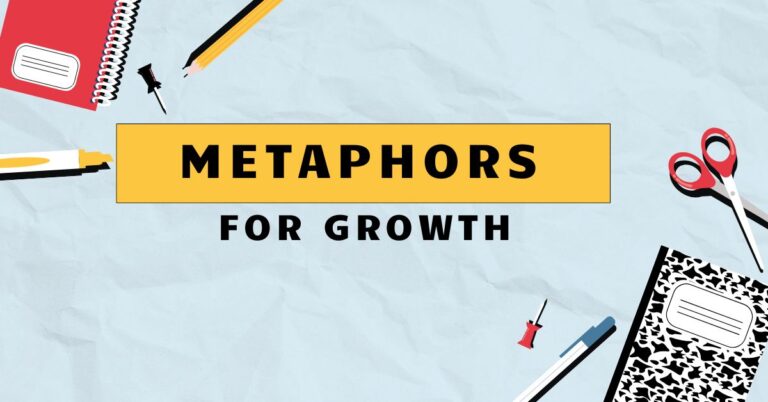33 Thanksgiving Metaphors: A Grammatical Feast of Figurative Language
Thanksgiving, a holiday rich in tradition and symbolism, also provides fertile ground for metaphorical expression. Understanding how metaphors function within the context of Thanksgiving enhances our appreciation of both the holiday’s cultural significance and the nuances of English grammar.
This article delves into the world of Thanksgiving metaphors, exploring their grammatical structure, varied types, and practical usage. Whether you’re an English language learner, a student of literature, or simply someone fascinated by the power of language, this guide will equip you with the knowledge to identify, analyze, and utilize Thanksgiving metaphors effectively.
This knowledge will not only improve your understanding of English but also enrich your appreciation for the holiday itself.
Table of Contents
- Introduction
- Definition of Metaphor
- Structural Breakdown
- Types and Categories of Thanksgiving Metaphors
- Examples of Thanksgiving Metaphors
- Usage Rules for Thanksgiving Metaphors
- Common Mistakes with Thanksgiving Metaphors
- Practice Exercises
- Advanced Topics
- Frequently Asked Questions
- Conclusion
Definition of Metaphor
What is a Metaphor?
A metaphor is a figure of speech that directly compares two seemingly unrelated things without using “like” or “as.” It asserts that one thingisanother, creating a vivid and often insightful connection. Unlike similes, which use explicit comparison, metaphors imply a shared quality or characteristic between the two subjects.
For example, saying “Thanksgiving is a harvest of blessings” suggests that Thanksgiving, like a harvest, is a time to gather and appreciate plentiful good things.
Classification of Metaphors
Metaphors can be classified in several ways, including:
- Standard Metaphors: Common and widely understood (e.g., “Time is money”).
- Novel Metaphors: Fresh and original comparisons (e.g., “The Thanksgiving table was a canvas of autumnal hues”).
- Dead Metaphors: Metaphors that have become so common they are no longer recognized as figurative (e.g., “the heart of the matter”).
- Mixed Metaphors: Combining two or more incompatible metaphors (e.g., “Let’s iron out the wrinkles while nipping it in the bud”). Mixed metaphors should be avoided.
Function of Metaphors
Metaphors serve multiple functions in language:
- Enhancing Understanding: They explain complex concepts by relating them to familiar ones.
- Creating Imagery: They evoke vivid mental pictures and sensory experiences.
- Adding Emotional Impact: They can convey feelings and attitudes in a powerful way.
- Making Language More Engaging: They add interest and creativity to writing and speech.
Contexts of Metaphorical Usage
Metaphors are used in a wide range of contexts, including:
- Literature: Poetry, novels, and plays often employ metaphors to create depth and meaning.
- Everyday Speech: We use metaphors unconsciously in everyday conversation.
- Journalism: Metaphors can make news stories more engaging and memorable.
- Advertising: Metaphors are used to create associations between products and desirable qualities.
- Politics: Metaphors can be used to frame issues and influence public opinion.
Structural Breakdown
Tenor and Vehicle
I.A. Richards introduced the termstenorandvehicleto describe the two parts of a metaphor.
Thetenoris the subject being described, and thevehicleis the object or concept used to describe it. In the metaphor “Thanksgiving is a feast of gratitude,” Thanksgiving is the tenor, and “feast of gratitude” is the vehicle.
The vehicle carries the meaning and attributes that are being transferred to the tenor.
Ground
Thegroundis the shared characteristic or similarity between the tenor and the vehicle. It’s the basis upon which the metaphor works.
In the example above, the ground might be the idea of abundance, celebration, and appreciation. The ground is not always explicitly stated but is implied by the connection between the tenor and vehicle.
Interaction Theory
Interaction theory, developed by Max Black, suggests that a metaphor works not by simply substituting one word for another, but by creating a new meaning through the interaction of the tenor and vehicle. The vehicle filters and organizes our understanding of the tenor, highlighting certain aspects and suppressing others.
This interaction creates a unique perspective that goes beyond a simple comparison. For example, describing Thanksgiving as “a melting pot of traditions” highlights the diverse cultural influences that have shaped the holiday, while downplaying other aspects such as its historical origins.
Types and Categories of Thanksgiving Metaphors
Thanksgiving as Abundance
This category focuses on metaphors that portray Thanksgiving as a time of plenty, richness, and overflowing blessings. These metaphors often use imagery of harvests, overflowing tables, and generous gifts.
They emphasize the idea of gratitude for the good things in life.
Thanksgiving as Family
These metaphors center on the importance of family connections, togetherness, and shared experiences. They often use imagery of warmth, comfort, and belonging.
They highlight the idea of Thanksgiving as a time to strengthen bonds with loved ones.
Thanksgiving as Gratitude
This category emphasizes the act of giving thanks and appreciating the blessings in one’s life. These metaphors often use imagery of heartfelt expressions, sincere appreciation, and a thankful spirit.
They highlight the idea of Thanksgiving as a time to reflect on the positive aspects of life.
Thanksgiving as History
These metaphors explore the historical roots and cultural significance of Thanksgiving. They often use imagery of pilgrims, early settlements, and the founding of America.
They highlight the idea of Thanksgiving as a time to remember the past and honor the sacrifices of those who came before us.
Thanksgiving as Food
This category uses food-related imagery to describe aspects of Thanksgiving. The turkey, pumpkin pie, and other traditional dishes become metaphors for comfort, tradition, and celebration.
These metaphors emphasize the sensory experience of Thanksgiving and its connection to nourishment and satisfaction.
Examples of Thanksgiving Metaphors
The following tables provide examples of Thanksgiving metaphors categorized by their thematic focus. Each example illustrates how different aspects of the holiday can be represented through figurative language.
Abundance Metaphors
This table showcases metaphors that portray Thanksgiving as a time of plenty and overflowing blessings. Notice how each metaphor uses vivid imagery to convey the idea of abundance.
| Metaphor | Tenor | Vehicle | Ground |
|---|---|---|---|
| Thanksgiving is a cornucopia of blessings. | Thanksgiving | Cornucopia | Abundance, overflowing |
| The Thanksgiving table was a sea of plenty. | Thanksgiving table | Sea | Vastness, abundance |
| Gratitude flowed like a river at Thanksgiving dinner. | Gratitude | River | Continuous flow, abundance |
| Thanksgiving is a golden harvest of memories. | Thanksgiving | Golden harvest | Richness, abundance, value |
| Our hearts were brimming with thankfulness on Thanksgiving Day. | Hearts | Brimming containers | Fullness, abundance of emotion |
| Thanksgiving is a treasure chest of family traditions. | Thanksgiving | Treasure chest | Valuable contents, abundance |
| The spirit of Thanksgiving is a wellspring of generosity. | Spirit of Thanksgiving | Wellspring | Continuous source, abundance |
| Thanksgiving is a banquet of joy. | Thanksgiving | Banquet | Abundance, celebration |
| The holiday was a cascade of good fortune. | Holiday | Cascade | Overwhelming abundance |
| Thanksgiving is a fertile ground for appreciation. | Thanksgiving | Fertile ground | Productivity, abundance |
| The blessings of the year poured down like autumn rain on Thanksgiving. | Blessings | Autumn rain | Plentiful, life-giving |
| Thanksgiving is a mountain of reasons to be grateful. | Thanksgiving | Mountain | Immense quantity, abundance |
| The day was a symphony of flavors and gratitude. | Thanksgiving Day | Symphony | Harmonious blend, abundance |
| Thanksgiving is a tapestry woven with threads of thankfulness. | Thanksgiving | Tapestry | Intricate, rich, abundant |
| The meal was an overflowing basket of deliciousness. | Meal | Overflowing basket | Abundance, variety |
| Thanksgiving is a river of kindness flowing through our community. | Thanksgiving | River | Continuous flow, abundance |
| The atmosphere was saturated with joy and thankfulness. | Atmosphere | Saturated | Full, abundant |
| Thanksgiving is a storehouse of cherished memories. | Thanksgiving | Storehouse | Repository, abundance |
| The holiday spirit was a cornucopia spilling over with goodwill. | Holiday spirit | Cornucopia | Overflowing, abundance |
| Thanksgiving is a well-stocked pantry of blessings. | Thanksgiving | Well-stocked pantry | Full, abundant |
| The day unfolded like a treasure map, leading to moments of gratitude. | Thanksgiving Day | Treasure map | Journey to abundance |
| Thanksgiving is a fountain of joy, spraying happiness on all who gather. | Thanksgiving | Fountain | Continuous flow, abundance |
| The holiday was a treasure trove of laughter and love. | Holiday | Treasure trove | Valuable contents, abundance |
| Thanksgiving is a garden of appreciation, where gratitude blossoms. | Thanksgiving | Garden | Growth, abundance |
Family Metaphors
This table illustrates metaphors that emphasize the importance of family connections and togetherness during Thanksgiving. Note the use of imagery related to warmth, comfort, and belonging.
| Metaphor | Tenor | Vehicle | Ground |
|---|---|---|---|
| Thanksgiving is a family’s warm embrace. | Thanksgiving | Warm embrace | Comfort, closeness |
| The family was a tapestry woven together by Thanksgiving traditions. | Family | Tapestry | Interconnectedness, unity |
| Thanksgiving is the glue that binds our family together. | Thanksgiving | Glue | Connection, unity |
| Our family is a Thanksgiving circle of love. | Family | Circle | Unity, wholeness |
| Thanksgiving is a home where hearts gather. | Thanksgiving | Home | Comfort, belonging |
| The family’s bond was a warm fire on Thanksgiving night. | Family bond | Warm fire | Comfort, security |
| Thanksgiving is a bridge connecting generations. | Thanksgiving | Bridge | Connection, continuity |
| Family is the heart of Thanksgiving. | Family | Heart | Central importance, life |
| Thanksgiving is a symphony of family voices. | Thanksgiving | Symphony | Harmony, unity |
| Our family is a Thanksgiving quilt of stories. | Family | Quilt | Interconnectedness, warmth |
| Thanksgiving is the anchor that grounds our family in tradition. | Thanksgiving | Anchor | Stability, connection |
| The dinner table was a haven for family connection. | Dinner table | Haven | Safety, comfort |
| Thanksgiving is a family tree, rooted in love. | Thanksgiving | Family tree | Growth, connection |
| Our family is a Thanksgiving constellation, shining brightly together. | Family | Constellation | Unity, brilliance |
| Thanksgiving is the hearth where family stories are told. | Thanksgiving | Hearth | Warmth, tradition |
| The bonds of family were the main course of Thanksgiving. | Family bonds | Main course | Primary importance |
| Thanksgiving is a lighthouse guiding our family home. | Thanksgiving | Lighthouse | Guidance, safety |
| Our family is a Thanksgiving garden, where love blossoms. | Family | Garden | Growth, beauty |
| Thanksgiving is the tapestry that weaves our family history together. | Thanksgiving | Tapestry | Intricacy, history |
| The gathering was a warm blanket of familial love. | Gathering | Warm blanket | Comfort, security |
| Thanksgiving is a compass, guiding us back to our family roots. | Thanksgiving | Compass | Direction, connection |
| Our family is a Thanksgiving chorus, singing in harmony. | Family | Chorus | Unity, celebration |
| Thanksgiving is a chain, linking generations together. | Thanksgiving | Chain | Connection, strength |
Gratitude Metaphors
This table provides examples of metaphors that portray Thanksgiving as a time of thankfulness and appreciation. Notice how each metaphor uses vivid imagery to convey the idea of gratitude.
| Metaphor | Tenor | Vehicle | Ground |
|---|---|---|---|
| Thanksgiving is a fountain of gratitude. | Thanksgiving | Fountain | Continuous flow, abundance |
| Gratitude is the seasoning of Thanksgiving. | Gratitude | Seasoning | Enhancement, flavor |
| Thanksgiving is a song of thankfulness. | Thanksgiving | Song | Expression, joy |
| Our hearts are gardens of gratitude on Thanksgiving. | Hearts | Gardens | Growth, beauty |
| Thanksgiving is a wellspring of appreciation. | Thanksgiving | Wellspring | Continuous source, abundance |
| Gratitude is the golden thread of Thanksgiving. | Gratitude | Golden thread | Value, importance |
| Thanksgiving is a harvest of thankful hearts. | Thanksgiving | Harvest | Gathering, abundance |
| Our spirits are beacons of gratitude on Thanksgiving Day. | Spirits | Beacons | Guidance, illumination |
| Thanksgiving is a canvas painted with gratitude. | Thanksgiving | Canvas | Artistic expression, beauty |
| Gratitude is the melody of Thanksgiving. | Gratitude | Melody | Harmony, beauty |
| Thanksgiving is a treasure chest of blessings to be thankful for. | Thanksgiving | Treasure chest | Valuable contents, abundance |
| Our souls are reservoirs of gratitude on Thanksgiving. | Souls | Reservoirs | Storage, abundance |
| Thanksgiving is a symphony of thankful voices. | Thanksgiving | Symphony | Harmony, unity |
| Gratitude is the sunlight of Thanksgiving. | Gratitude | Sunlight | Warmth, life-giving |
| Thanksgiving is a tapestry woven with threads of gratitude. | Thanksgiving | Tapestry | Intricacy, richness |
| Our minds are maps of gratitude on Thanksgiving Day. | Minds | Maps | Guidance, direction |
| Thanksgiving is a beacon shining with gratitude. | Thanksgiving | Beacon | Guidance, illumination |
| Gratitude is the cornerstone of Thanksgiving. | Gratitude | Cornerstone | Foundation, importance |
| Thanksgiving is a garden where gratitude blossoms. | Thanksgiving | Garden | Growth, beauty |
| Our hearts are overflowing cups of gratitude on Thanksgiving. | Hearts | Overflowing cups | Fullness, abundance |
| Thanksgiving is a wellspring of thankful reflections. | Thanksgiving | Wellspring | Continuous source, abundance |
| Gratitude is the compass guiding us through Thanksgiving. | Gratitude | Compass | Direction, guidance |
| Thanksgiving is a symphony of grateful hearts. | Thanksgiving | Symphony | Harmony, unity |
History Metaphors
This table provides examples of metaphors that portray Thanksgiving as a historical event. Notice how each metaphor uses vivid imagery to convey the historical significance of Thanksgiving.
| Metaphor | Tenor | Vehicle | Ground |
|---|---|---|---|
| Thanksgiving is a bridge to our past. | Thanksgiving | Bridge | Connection, history |
| The pilgrims’ journey was the seed of Thanksgiving. | Pilgrims’ journey | Seed | Origin, beginning |
| Thanksgiving is a chapter in the book of American history. | Thanksgiving | Chapter | Part of a larger story, significance |
| The first Thanksgiving was a spark that ignited a tradition. | First Thanksgiving | Spark | Beginning, ignition |
| Thanksgiving is a time capsule of early American life. | Thanksgiving | Time capsule | Preservation, history |
| The pilgrims’ courage was the bedrock of Thanksgiving. | Pilgrims’ courage | Bedrock | Foundation, strength |
| Thanksgiving is a landmark on the timeline of American culture. | Thanksgiving | Landmark | Significance, importance |
| The Mayflower Compact was the blueprint for Thanksgiving’s spirit. | Mayflower Compact | Blueprint | Plan, foundation |
| Thanksgiving is a mosaic of historical moments. | Thanksgiving | Mosaic | Collection, history |
| The pilgrims’ resilience was the compass guiding Thanksgiving’s path. | Pilgrims’ resilience | Compass | Direction, guidance |
| Thanksgiving is a bridge connecting the past and present. | Thanksgiving | Bridge | Connection, continuity |
| The first harvest was the prologue to Thanksgiving’s story. | First harvest | Prologue | Beginning, introduction |
| Thanksgiving is a monument to perseverance and gratitude. | Thanksgiving | Monument | Commemoration, significance |
| The pilgrims’ faith was the anchor of the first Thanksgiving. | Pilgrims’ faith | Anchor | Stability, foundation |
| Thanksgiving is a tapestry woven with threads of history. | Thanksgiving | Tapestry | Intricacy, richness |
| The early settlers’ struggles were the roots of Thanksgiving’s traditions. | Early settlers’ struggles | Roots | Origin, foundation |
| Thanksgiving is a landmark on the map of American heritage. | Thanksgiving | Landmark | Significance, importance |
| The spirit of the Wampanoag tribe is the heart of Thanksgiving’s history. | Spirit of the Wampanoag | Heart | Central importance, life |
| Thanksgiving is a museum of memories from the past. | Thanksgiving | Museum | Preservation, history |
| The pilgrims’ voyage was the prologue to Thanksgiving’s legacy. | Pilgrims’ voyage | Prologue | Beginning, introduction |
| Thanksgiving is a symbol of unity between cultures. | Thanksgiving | Symbol | Representation, meaning |
| The first Thanksgiving was a cornerstone of cultural harmony. | First Thanksgiving | Cornerstone | Foundation, importance |
Food Metaphors
This table provides examples of metaphors that portray Thanksgiving using food-related imagery. Notice how each metaphor uses vivid imagery to convey the sensory experience of Thanksgiving and its connection to nourishment and satisfaction.
| Metaphor | Tenor | Vehicle | Ground |
|---|---|---|---|
| Thanksgiving is a feast for the soul. | Thanksgiving | Feast | Nourishment, satisfaction |
| The turkey was the centerpiece of our Thanksgiving joy. | Turkey | Centerpiece | Central importance, focus |
| Thanksgiving dinner is a symphony of flavors. | Thanksgiving dinner | Symphony | Harmony, blend |
| Pumpkin pie is a slice of Thanksgiving heaven. | Pumpkin pie | Slice of heaven | Delight, perfection |
| Cranberry sauce is the jewel of the Thanksgiving table. | Cranberry sauce | Jewel | Value, beauty |
| Stuffing is the heart of Thanksgiving dinner. | Stuffing | Heart | Central importance, life |
| Mashed potatoes are the comfort food of Thanksgiving. | Mashed potatoes | Comfort food | Nourishment, solace |
| Gravy is the glue that holds Thanksgiving dinner together. | Gravy | Glue | Connection, unity |
| Thanksgiving dinner is a tapestry of tastes. | Thanksgiving dinner | Tapestry | Intricacy, richness |
| The aroma of Thanksgiving is a warm embrace. | Aroma of Thanksgiving | Warm embrace | Comfort, welcome |
| Thanksgiving is a banquet of culinary delights. | Thanksgiving | Banquet | Abundance, variety |
| The dessert table was a treasure trove of sweets. | Dessert table | Treasure trove | Valuable contents, abundance |
| Thanksgiving is a buffet of blessings. | Thanksgiving | Buffet | Variety, abundance |
| The meal was a nourishing balm for the soul. | Meal | Nourishing balm | Healing, comfort |
| Thanksgiving dinner is a cornucopia of flavors and textures. | Thanksgiving dinner | Cornucopia | Abundance, variety |
| The leftovers were a gift that kept on giving. | Leftovers | Gift | Value, abundance |
| Thanksgiving is a smorgasbord of culinary traditions. | Thanksgiving | Smorgasbord | Variety, tradition |
| The turkey was the star of the Thanksgiving show. | Turkey | Star | Central importance, brilliance |
| Thanksgiving dinner is a mosaic of family recipes. | Thanksgiving dinner | Mosaic | Collection, tradition |
| The pumpkin pie was the crowning glory of the meal. | Pumpkin pie | Crowning glory | Perfection, completion |
| Thanksgiving is a potluck of family favorites. | Thanksgiving | Potluck | Variety, sharing |
| The feast was a symphony of savory and sweet notes. | Feast | Symphony | Harmony, blend |
Usage Rules for Thanksgiving Metaphors
Appropriateness of Metaphors
The appropriateness of a metaphor depends on the context and audience. Consider the setting, the tone, and the knowledge level of your audience when choosing a metaphor.
A metaphor that works well in a poem might be inappropriate in a formal business presentation. For instance, using overly sentimental metaphors about family might not be suitable in a professional setting.
Clarity and Relevance
A good metaphor should be clear and relevant to the subject matter. The connection between the tenor and the vehicle should be easily understood.
Avoid metaphors that are too obscure or far-fetched. The metaphor should also enhance understanding, not confuse the audience.
If a metaphor requires extensive explanation, it’s likely not effective. Ensure the ground between the tenor and the vehicle is easily discernible.
Cultural Sensitivity
Be mindful of cultural differences when using metaphors. Some metaphors may have different meanings or connotations in different cultures.
Avoid metaphors that could be offensive or insensitive to certain groups. For example, metaphors related to specific religious practices might not be appropriate in a diverse audience.
Research and consider the potential impact of your metaphors on different cultural backgrounds.
Common Mistakes with Thanksgiving Metaphors
Mixed Metaphors
A mixed metaphor combines two or more incompatible metaphors, creating a nonsensical or confusing image. For example: “Let’s grab the bull by the horns and nip it in the bud.” This combines the image of seizing control (grabbing the bull by the horns) with the image of stopping something early (nipping it in the bud), which don’t logically fit together.
To avoid mixed metaphors, ensure that all parts of your metaphorical expression are consistent and coherent.
Incorrect: “The Thanksgiving table was a melting pot of flavors, sailing smoothly into the sunset.”
Correct: “The Thanksgiving table was a melting pot of flavors.”
Correct: “Thanksgiving was a ship sailing smoothly into the sunset of the year.”
Clichés
Clichés are overused metaphors that have lost their impact and originality. Examples include “as busy as a bee” or “as light as a feather.” While clichés may be easy to understand, they don’t add anything new or interesting to your writing.
Avoid clichés by choosing fresh, original metaphors that create a unique and memorable image. Instead of saying “Our hearts were full,” try “Our hearts were brimming with thankfulness.”
Cliché: “We were thankful for all our blessings.”
Improved: “We cherished each blessing, counting them like precious jewels.”
Inappropriate Tone
Using a metaphor that doesn’t match the tone or subject matter can be jarring and ineffective. For example, using a humorous or flippant metaphor when discussing a serious topic can be disrespectful.
Choose metaphors that are consistent with the overall mood and message of your communication. Consider the emotional impact of your metaphors and ensure they align with your intended message.
Using dark or morbid metaphors in a celebratory context like Thanksgiving would be inappropriate.
Inappropriate: “Thanksgiving dinner was a battlefield of forks and knives.”
Appropriate: “Thanksgiving dinner was a harmonious blend of flavors and traditions.”
Practice Exercises
Exercise 1: Identifying Metaphors
Instructions: Read the following sentences and identify the metaphors. Explain the tenor, vehicle, and ground for each metaphor.
- Thanksgiving is a warm blanket of family traditions.
- Gratitude is the seasoning of Thanksgiving dinner.
- The pilgrims’ journey was the seed of a new nation.
Answer Key:
-
Metaphor: Thanksgiving is a warm blanket of family traditions.
Tenor: Thanksgiving
Vehicle: Warm blanket
Ground: Comfort, security, familiarity -
Metaphor: Gratitude is the seasoning of Thanksgiving dinner.
Tenor: Gratitude
Vehicle: Seasoning
Ground: Enhancement, flavor, essential element -
Metaphor: The pilgrims’ journey was the seed of a new nation.
Tenor: Pilgrims’ journey
Vehicle: Seed
Ground: Origin, potential, growth
Exercise 2: Creating Metaphors
Instructions: Create your own metaphors for the following aspects of Thanksgiving.
- The Thanksgiving table
- Family gatherings
- The feeling of gratitude
Sample Answers:
- The Thanksgiving table is a canvas of autumnal colors and flavors.
- Family gatherings are a symphony of laughter and shared stories.
- The feeling of gratitude is a warm ember glowing in our hearts.
Exercise 3: Analyzing Metaphors
Instructions: Analyze the following metaphor. Explain its meaning, emotional impact, and effectiveness.
“Thanksgiving is a bridge connecting generations.”
Sample Analysis:
Meaning: This metaphor suggests that Thanksgiving serves as a link between past, present, and future generations. It implies that the holiday helps to maintain traditions and values across time.
Emotional Impact: The metaphor evokes a sense of connection, continuity, and belonging. It highlights the importance of family history and the shared experiences that bind generations together.
Effectiveness: The metaphor is effective because it uses a familiar image (a bridge) to convey a complex idea (the intergenerational connection fostered by Thanksgiving). It is clear, concise, and emotionally resonant.
Advanced Topics
Extended Metaphors in Thanksgiving Literature
An extended metaphor is a metaphor that is developed over several lines or even throughout an entire literary work. In Thanksgiving literature, extended metaphors can be used to explore complex themes and ideas related to the holiday’s history, traditions, and cultural significance.
For example, a poem might use the extended metaphor of a harvest to represent the idea of gathering and appreciating the blessings in one’s life. Analyzing extended metaphors can provide deeper insights into the author’s message and the cultural context of the work.
Metaphorical Themes in Thanksgiving Traditions
Many Thanksgiving traditions are themselves metaphorical representations of deeper themes and values. The Thanksgiving feast, for example, can be seen as a metaphor for abundance, gratitude, and community.
The act of sharing food with family and friends symbolizes the importance of generosity and connection. Even the traditional Thanksgiving dishes, such as turkey and pumpkin pie, can be interpreted as metaphors for specific aspects of the holiday’s history and cultural identity.
Exploring these metaphorical themes can enhance our understanding and appreciation of Thanksgiving traditions.
Frequently Asked Questions
Conclusion
Thanksgiving metaphors offer a rich and insightful way to understand the holiday’s many facets. By recognizing and analyzing these figures of speech, we can deepen our appreciation for the traditions, values, and emotions associated with Thanksgiving.
Whether you are crafting your own Thanksgiving messages or simply reflecting on the holiday’s significance, understanding the power of metaphor can enrich your experience and enhance your communication.

